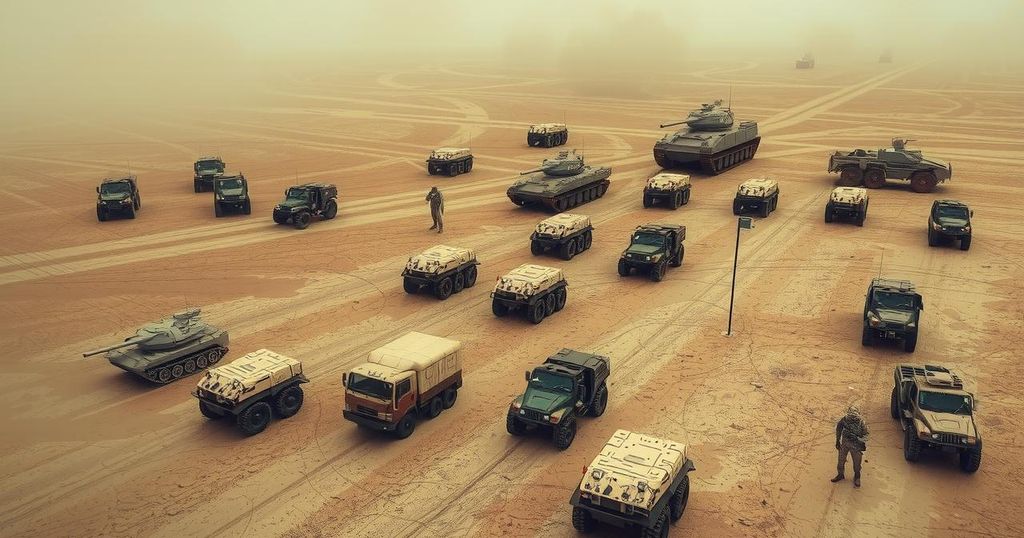World news
ANDREI RUDENKO, ASIA, BIDEN ADMINISTRATION, DEFENSE, ENERGY INFRASTRUCTURE, EUROPE, EUROPE/ASIA, KIM, KIM JONG UN, KOREA, NORTH, KURSK, MILITARY, MILITARY COOPERATION, MOSCOW, NIS, NORTH ’ S CENTRAL MILITARY COMMISSION, NORTH KOREA, PYONGYANG, RUSSIA, SHOIGU, SOUTH, SOUTH KOREA, THE RULING, UKRAINE, US, WAR, WORKERS ’ PARTY, ZE
Sofia Rodriguez
0 Comments
North Korea Acknowledges Troop Deployment to Russia in Ukraine Conflict
North Korea has officially acknowledged its deployment of troops to Russia to assist in the war against Ukraine. This move is rooted in a mutual defense treaty and has raised concerns regarding significant troop losses and potential exchanges of military technology between North Korea and Russia. The North’s involvement is shaping combat dynamics on the battlefield, especially around the Kursk area.
In a notable development, North Korea has officially confirmed its deployment of troops to Russia to bolster military efforts in the ongoing war against Ukraine. This confirmation comes after months of speculation, following intelligence reports indicating that North Korea had dispatched as many as 12,000 soldiers last year. Until now, the reclusive regime had refrained from publicly addressing these troop movements.
The confirmation arrived via a statement from North Korea’s Central Military Commission of the ruling Workers’ Party, which cited leader Kim Jong Un’s directive to send combat troops. This action was framed under a mutual defense treaty between North Korea and Russia, with Kim asserting the troops’ mission is to “annihilate and wipe out the Ukrainian neo-Nazi occupiers” and collaborate with Russian forces in liberating the Kursk region.
In February, South Korean intelligence indicated that North Korea may have sent more troops following reported heavy casualties among their soldiers on the front lines. Kim’s regime has faced significant losses, with reports from the National Intelligence Service (NIS) estimating that about 300 North Korean troops were killed and approximately 2,700 injured. Ukrainian President Volodymyr Zelenskyy estimates those numbers to be closer to 4,000, while US intelligence suggests around 1,200 deaths.
Earlier this year, Kim reaffirmed his support for Russia during a meeting with Sergei Shoigu, Russia’s defense minister. Both leaders reiterated their commitment to the mutual defense agreement, and discussions regarding a potential visit by Kim to Moscow appear to be underway, as noted by Russian Deputy Foreign Minister Andrei Rudenko.
In addition to troop support, North Korea has been supplying a range of conventional weapons to Russia. Concerns are rising among South Korea, the United States, and other allies about the potential for Russia to reciprocate by providing advanced weapon technologies, which could significantly enhance North Korea’s nuclear capabilities. The economic and military aid exchanges could also escalate as both nations deepen their collaboration.
While North Korean soldiers are often seen as disciplined, their lack of combat experience has made them susceptible to drone and artillery strikes on the battlefields of Ukraine. Nevertheless, reports suggest that their involvement is contributing to military strategies aimed at overwhelming Ukrainian defenses, particularly in crucial areas like Kursk. This ongoing engagement is revealing both the risks and potential tactical advantages as North Korea seeks to assert itself further in global conflicts.
In summary, North Korea’s confirmation of troop deployments to support Russia in its war against Ukraine marks a significant escalation in military collaboration between the two nations. With leadership asserting this move as part of mutual defense obligations, concerns regarding casualties, and potential advanced weapon exchanges highlight the intricacies of this alliance. The situation reveals both opportunities and vulnerabilities for the North Korean military as they navigate unfamiliar combat environments.
Original Source: www.9news.com.au




Post Comment